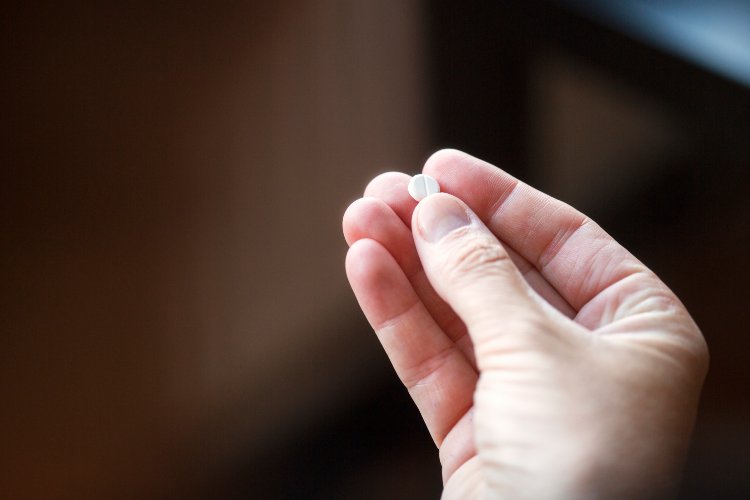What is Halcion?
Triazolam, also known as Halcion, is a prescription medication used over the short-term to treat insomnia, and it is not recommended for use for more than two to three weeks at a time without evaluation and recommendation from a doctor, according to the U.S. Food & Drug Administration.1
While triazolam does have legitimate medical purposes, there is a potential for abuse. Unfortunately, ongoing abuse can lead to problems like dependence and withdrawal.
Halcion’s Class and Place on the Schedule
Triazolam belongs to a class of drugs called benzodiazepines, which according to the National Institute on Drug Abuse (NIDA), are classified as central nervous system depressants. This means that they have sedative effects and can treat anxiety and insomnia.2
The Drug Enforcement Administration (DEA), labels Halcion as a Schedule IV Controlled Substance. It is scheduled alongside other benzodiazepines, such as Xanax, Ativan, Valium, and Klonopin.3
Is Halcion Addictive?
According to NIDA, an addiction can develop with long-term use of depressant drugs like triazolam.2 When this occurs, an addiction professional will diagnose a substance use disorder, which is the clinical term for addiction. This type of disorder develops when triazolam abuse continues, despite negative consequences, like health issues or problems functioning at work.
How is Halcion Used?
Halcion is available in the form of a tablet. People may take it by mouth as intended, or it is abused by crushing it up and snorting it.
Is Halcion Safe?
Triazolam is approved for medical use when prescribed and monitored by a doctor, but abusing the drug or using it long-term can be unsafe. Abuse occurs when it’s taken in larger doses than prescribed, is taken when that triazolam belongs to someone else, or is bought illegally off the streets. Since triazolam has the potential to cause addiction, medical experts do not recommend that it be used for longer than a few weeks at a time.1
Can you Overdose on Halcion?
Among the safety concerns associated with triazolam is the risk of a drug overdose. According to the FDA, symptoms of a Halcion overdose include sleepiness, slurred speech, coordination problems, coma, and seizures. A triazolam overdose can also cause breathing problems, which can be fatal, especially when a Halcion is mixed with alcohol. The recommended maximum dose of triazolam is 0.5 mg.1
Combining triazolam and prescription painkillers called opioids can also increase the risk of overdose. According to NIDA, over 30 percent of opioid overdoses also include a benzodiazepine-like Halcion. In addition, some research shows that people who are prescribed opioids and benzodiazepines together are 10 times more likely to die from an overdose when compared to those who only take opioids.4
Halcion’s Effects and Withdrawal
What are the Short-Term Effects?
Given the fact that triazolam is a depressant or sedative drug, it has a calming effect and can make people feel drowsy.2 In addition to these effects, some side effects linked to triazolam, according to the FDA, are:
- Dizziness
- Lightheadedness
- Euphoria
- Elevated heart rate
- Fatigue
- Confusion
- Memory problems
- Cramps
- Visual hallucinations
While the above side effects are possible, the most common complaints associated with Halcion include drowsiness, dizziness, and lightheadedness.2
Long-Term Effects of Halcion
Halcion is generally not recommended for long-term use. Those who do use the drug for more than a few weeks are at risk of developing tolerance, meaning they will need larger and larger doses of the drug to achieve the same desired effects. With ongoing use, a person may also become dependent upon triazolam, meaning the body adapts to the drug and cannot function without it. Once dependence occurs, withdrawal symptoms will appear when stopping triazolam use.
While dependence does not always lead to addiction, this is a possible consequence of triazolam abuse as well. Addiction occurs when a person experiences brain changes that lead to compulsive use of the drug.2
What is Withdrawal from Halcion like?
As previously mentioned, dependence upon Halcion will cause withdrawal symptoms when drug use stops. According to the FDA, common withdrawal symptoms include:
- Seizures
- Tremor
- Vomiting
- Cramps
- Sweating
- Bad mood
- Insomnia
- Hallucinations
Sometimes the above symptoms can be severe, and the FDA, therefore, cautions against suddenly discontinuing Halcion use. Unfortunately, these withdrawal symptoms can occur even after just a week or two of using this drug.1
Treatment for Halcion Abuse
Given the fact that Halcion dependence can cause severe withdrawal symptoms, it is important to contact a doctor to begin detoxing from Halcion. Typically, a patient will gradually reduce daily doses of the drug to avoid severe withdrawal symptoms or complications.1
Detoxing from Halcion is just the first step toward recovery from Halcion abuse. Treatment should also include psychological or behavioral methods, such as counseling, to address the underlying issues that lead to benzodiazepine abuse. Counseling methods such as cognitive behavioral therapy can help address the anxiety or sleep issues that led to drug abuse.





